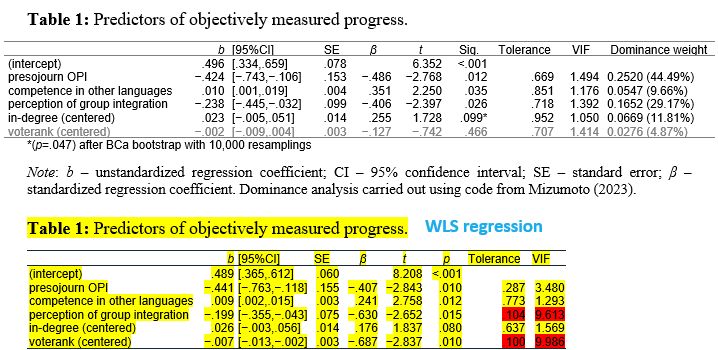edit below
I am doing this analysis for the first time. How concerned should I be about heteroscedasticity in my data? Here's the scatterplot of predicted values vs residuals:
 The Breusch-Pagan test is significant at p=.03 (χ²=4.682), so below <.05, but not .01.
The Breusch-Pagan test is significant at p=.03 (χ²=4.682), so below <.05, but not .01.
With regular multiple regression, the result is the first table below, quite nice. If instead I try WLS regression, the values change drastically (table highlighted in yellow), with two predictors ending up with unacceptable collinearity indices:

Here is the original dataset if it helps: https://docs.google.com/spreadsheets/d/13U7xDK7otj-vBOcx6yTpsguAd-wlFNad/edit?usp=sharing&ouid=113244913961284427801&rtpof=true&sd=true
Thanks a lot in advance!
EDIT Thanks, Everyone, for the comments!
So, I ran regression with heteroscedasticity-consistent (robust) SEs:
Is my understanding correct that the standardized beta values remain unchanged; what changes is the SEs, confidence intervals, p and t values, and effect sizes?
And, does anyone know how to get output for robust SEs complemented by i) confidence intervals for beta, ii) Tolerance and iii) VIF values (unless the latter two do not change with robust SEs; they do in weighted regression), either in SPSS or R?

